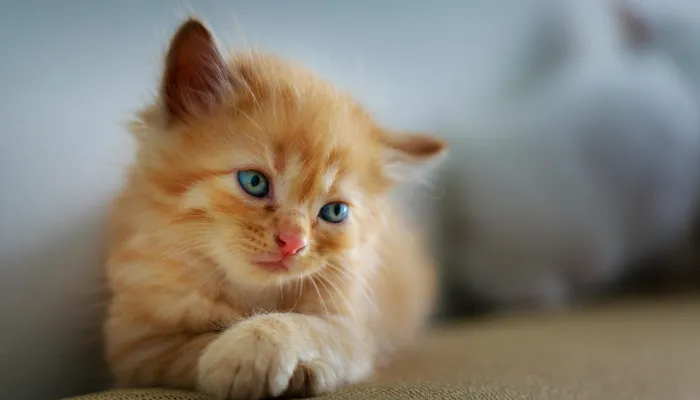Cats are known to be independent animals, with an enigmatic touch to them that renders their behavior a little bit unpredictable.
While they do not articulate their sentiments as explicitly as people do, there are gentle ways (and not so gentle) of showing disapproval, and of course, there’s always aggression. If you can’t understand those signs, you can consider the free cat translator available online.
In this blog, we will discuss the various refusals, discomforts or annoyances that cats express. If you’ve ever wondered, how do cats say “no”, this guide will help you understand their unique language.

Basics of Cat Communication
Cats tend to have various methods of expressing their frustration that include showing off their body, making some strange vocal sounds, and even scratching things. Dogs tend to bark or wag their tails to express their anger, but cats do it differently.
Cats can effortlessly cancel out anything being offered them using some of these methods;
- Turning their head away
- Flicking or twitching their tail
- Flattening their ears
- Hissing or growling
- Walking away or hiding
These signals should not be neglected as they tell you where the line is that should not be crossed.
The next section will highlight the various ways in which a feline, as a pet for example, vocalizes or behaves to express an unwillingness or no.
Silent Way Cats Say “No” With Body Language
A cat can express negative sentiments such as anger or disagreement through its body movements. To understand the aspect of how do cats say “no”, it is pivotal to observe their body movements very carefully.
1. Movements of the Tail
The tail of a cat is extremely agile and hence can be used to convey many emotions ranging from agreement to refusal. A few of them include:
| Tail Movement | What It Means |
|---|---|
| Flicking back and forth | Mild annoyance, a warning sign |
| Puffing up | Fear or extreme discomfort |
| Tucking under the body | Fear or submission |
| Swishing aggressively | Irritation or anger |
If a cat moves a tail while being stroked, it is recommend to stop immediately because there are extremes of ignoring these particular situations and also dealing with more severe reactions.
2. Positions of Ears
Ears are another key indicator of a cat’s mood. If their ears are:
- Increase Over Time – They are ready to participate in a conversation.
- Switched Extend To Horizontal – They lack an interest and are annoyed.
- As Flat Head With Sides Extend – Extremely angry or afraid.
3. Prolonged Blinking And Eye Contact
Extended blinking and eye contact can signal both communication and threat. A cat can communicate that they do not want to interact by staring at you and blinking slowly. If your cat stares and slowly blinks at you, they are likely stating, “No, I don’t want this right now.”
4. Hiding or Simply Walking Away
For a cat, one of the simplest ways to say “no” is to walk away. When you try to embrace them and they suddenly disappear under the bed, this is a clear signal that they are not in the mood for affection.
Interpreting and noticing your cat’s body’s communications can help you know when to step back and avoid engagement. The next time you’re not so sure of their emotion, watch their tail and ears and take notice of their body stance.
Vocalization: When Cats Speak Their Hearts Out
Notice that cats are not as noisy as dogs, but are able to use sounds to show their feelings. If you were asking yourself, how do cats say “no” when it comes to their voice, here are some of their approaches:
1. Growling or Hissing
These are the most basic expressions a furious cat will display verbally. Hissing is often used as a negative response from an irritated and fearful animal. It is a sign of getting angrier than growling. If your cat starts growling and hissing, it’s better to leave them alone which is often the case when you’re.
2. Yowling or Screaming
When they are distressed, a cat can release a long drawn out annoying screech as a sign of distress. This can be caused by pain, feeling threatened, or can basically mean, ”Leave me be!”
3. Short, Sharp Meows
A sharp high pitched meow can elaborately indicate anger. Imagine if you tried picking your feline pet when he was in a dissatisfied mood, then he might meow in that annoyed tone to elaborate, “Set me free!”
Understanding the vocal signs of your cat helps you to fulfill their requirements while avoiding scenarios that make them unhappy.
Behavioral Signs of Cats Saying No
Apart from body movements and sounds, cats also tend to perform other actions as a form of refusal.
1. Swatting or Biting
Your kitty can set boundaries with you by swatting or lightly biting you, which is not done out of ‘sole cruelty’. More often than not, this is a reaction of your cat who has become overstimulated by too much petting.
2. Avoidance or Running Away
If you have a cat that runs away from you rather quickly whenever you try to approach, it might be a sign that they are not prepared to engage at that moment in time. Give them some space and be assured that when they desire interaction, they will come to you.
3. Refusing Food or Treats
Cats are also capable of saying “no’ to you by simply not eating.
If a cat refuses its food, it could be bored, sick, or full. A vet needs to be consulted if the cat persistently refuses to eat.
Cats are solitary pets. They will make it known when they do not wish to be bothered. Keeping an eye on this behavior will augment your relationship with your cat.
How to Respect Your Cat’s Boundaries?
Now that you know how do cats say “no”, you must learn to respect their boundaries. Look at these suggestions:
- Giving them space – If the cat walks away from you, do not follow it.
- Letting them come to you – Cats do not like being approached by people so cat owners should allow them to initiate interaction.
- Listening to them – If the cat flicks their tail or pinches its ears, come to a halt immediately.
- Allowing retreat – Give the cat some quiet, comfortable place where it can rest.
- Removing dull behavior – Give treats and gentle pats for being good.
If you respect your cat, they will respect you as well granting a more positive relationship.
Conclusion
Thus, how do cats say “no”? They do so with a blend of actions, words, and body movements.
The swatting of a paw, a menacing yowl, or even just a hasty retreat; a cat has a thousand ways of distancing itself from other entities.
Cats, the quintessential emotionally sensitive animal, do not react well to contorting of their feelings. Also, knowing how to interact with one will help you maintain a cordial relationship with them.
The next time your cat spins its crown or trails away, you’re aware they are just relaxing or in short, blushing to say, “Not now.” Understanding will make you a more dedicated and sympathetic cat owner.
